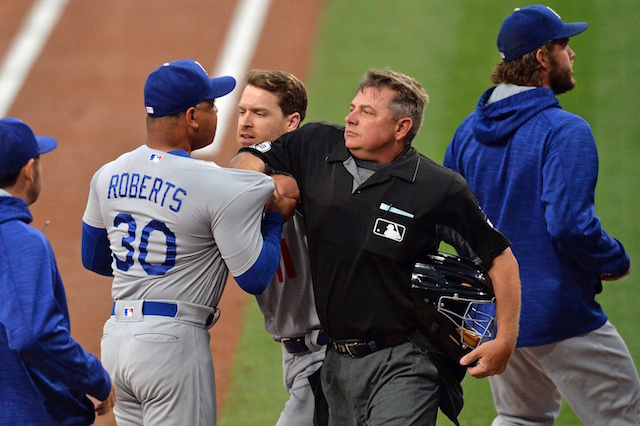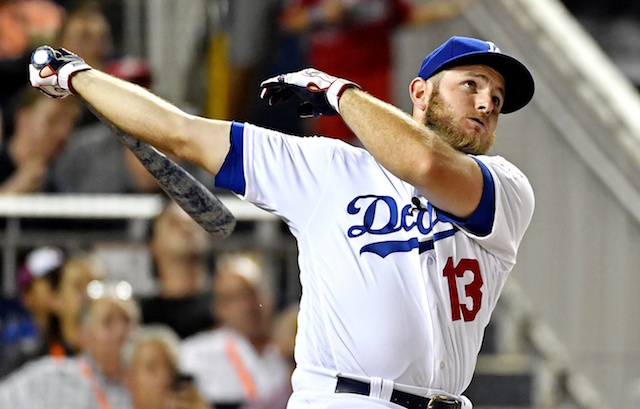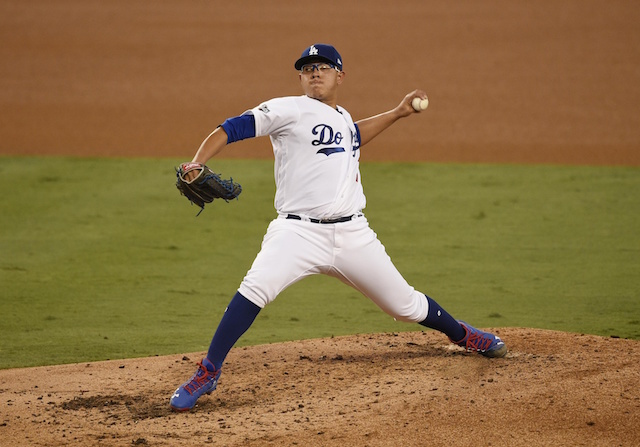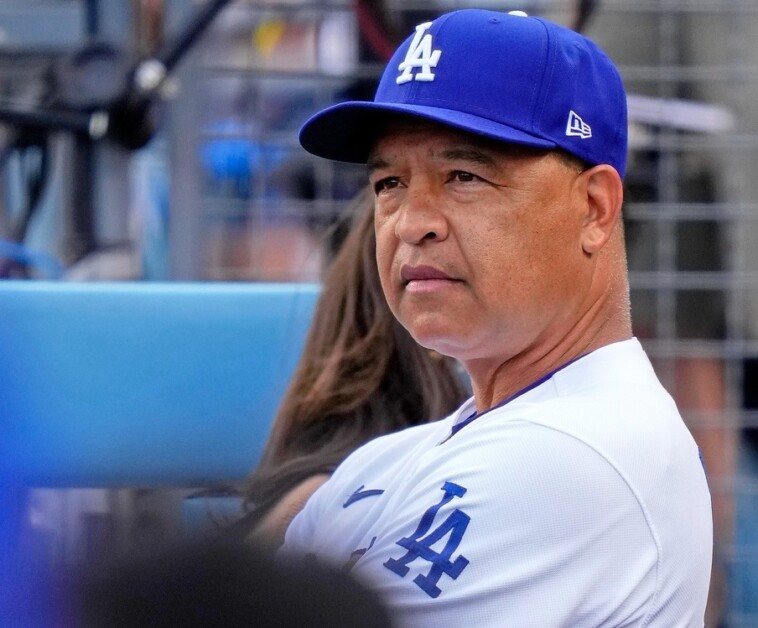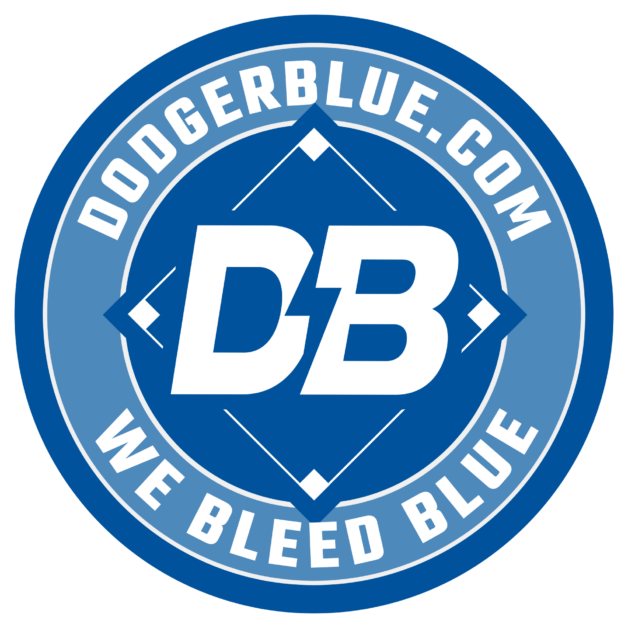It’s Aug. 23 and the Los Angeles Dodgers are 89-36 with a 21-game lead over the Arizona Diamondbacks. Another National League West division title is a mere formality at this point.
No, this isn’t 2019 I’m talking about — but 2017 — just a few months before the Dodgers would make their first World Series appearance in nearly 30 years.
This season’s Dodgers are 85-44 and leading the second-place Diamondbacks by 20.5 games in the NL West standings. Like the 2017 group, this team is hoping to make the World Series — and this time win it all.
In looking at the two teams, the 2017 and 2019 Dodgers have a lot in common. Both had the best record in baseball at this point in the season, both were led by Cody Bellinger and both were built around (arguably) the league’s best pitching staff.
So with that in mind, let’s compare the two teams.
Star Power
Despite the disappointing 2018 sandwiched in the middle, 2017 and 2019 belong to Bellinger in the Dodger history books. In 2017, Bellinger was named Rookie of the Year, smashing 39 home runs with a .933 on-base plus slugging percentage (which was second on the team behind Justin Turner).
This year, those numbers seem pedestrian — with Bellinger already having hit 42 home runs (new career high) and accompanied it with a 1.079 OPS. With a Rookie of the Year Award under his belt, his sights are now set on improving upon his ninth-place finish in the MVP race.
On the pitching side of things, 2017 belonged (yet again) to Clayton Kershaw. His 18 wins and 2.31 ERA were both the best in the league, giving him a second-place finish in the Cy Young voting (his seventh-consecutive top-five finish).
This year, while Kershaw has been quietly magnificent (2.71 ERA), he has more help than ever in the form of Walker Buehler (10-3, 3.16 ERA) and Hyun-Jin Ryu (12-3, 1.64 ERA).
Starting Pitching
If there’s one key similarity between the two teams, it’s the strength of their starting pitching. In 2017, the Dodgers staff finished with a 3.39 ERA — best in baseball. This season? How about a 2.94 ERA that leads the Majors as well as an MLB-best 85wins and 744.2 innings pitched.
Once again, this group’s fate in October will rest in the hands of the league’s best rotation.
Relief Pitching
If starting pitching is the great equalizer between these two teams, it’s the lineup and the bullpen where differences begin to emerge. In 2017, the Dodgers boasted the fourth-best ERA (3.38) — which was tops in the NL.
They were also third in saves, second in batting-average-against and second in wins.
This season? Not so much. As of now, the Dodgers are seventh in baseball in bullpen ERA (4.02), 15th in saves, though do rank second in batting-average-against (.227). Keep in mind, however, that the 2017 numbers were boosted by a pair of trade-deadline moves to acquire Tony Cingrani and Tony Watson.
Hitting
While the 2019 group is lagging behind in the bullpen, the offense is light-years ahead. In 2017, the Dodgers were 12th in runs, 23rd in hits, 11th in home runs and eighth in OPS.
In 2019 the Dodgers are fourth in runs (leading the NL), 10th in hits, third in home runs and fifth in OPS.
In 2017, aside from Bellinger, the group relied primarily on a smaller core of Turner, Corey Seager, Yasmani Grandal, Yasiel Puig and Chris Taylor. This year, however, the Dodgers’ strength lies in their numbers.
While they’re still getting elite production from a small group (Bellinger, Max Muncy, Joc Pederson, etc.), they’re also receiving contributions from the likes of Alex Verdugo, Matt Beaty and David Freese.
As a result, they’ve been able to weather the storm of injuries to Freese, Seager, Pollock, Taylor and Verdugo throughout the season. Furthermore, the 10 walk-off wins the 2017 team had has already been surpassed.
Experience
One thing that can’t be discounted on the 2019 Dodgers roster is the level of experience it boasts. In 2017, everything was brand new — but for this group, there are numerous folks who have now been to two World Series and know what it feels like.
On one hand, that could be seen as a disadvantage — the pressure now is greater than ever, and simply making the World Series will no longer be acceptable. On the other, it’s safe to imagine the moment will no longer be too big for Bellinger, Seager, Buehler and other youngsters.
Overall
Overall, it’s hard not to be excited about how this 2019 group stacks up against the team from 2017. Of course, it’s a completely different league and (somewhat) different group of players, but the overall composition of the Dodgers’ 2019 roster is pretty remarkable.
Yes, the bullpen has some issues, and there wasn’t the splashy trade most anticipated at the deadline. But the lineup is as potent and deep as ever and their rotation is a three-headed monster (not to mention Kenta Maeda’s solid season and Rich Hill’s ability when he’s healthy).
Of course, none of this matters unless it translates onto the field come crunch time. But you have to like the Dodgers’ chances with this group.






